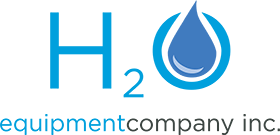What is Etching? ETCHING is the scratching or pitting of glassware. It creates a frosty and cloudy look to dishes. What is Hard Water? HARD WATER means you have dissolved rock in your water. That rock leaves white deposits on everything it touches. How Do I Know If I Have Hard Water? Soak your glass Read the full article…
Do You Like the Taste of Your Water?
Tasty Drinking Water Reverse Osmosis Systems are for pure drinking water, right from your kitchen sink. Reverse Osmosis greatly improves the taste, odor, quality, and appearance of your drinking water. We have many people calling us to say they don’t drink their water because of the taste. For the summer months especially, you want tasty Read the full article…
Before Filling Your Pool With Well Water…
Read this before filling your pool with well water! Pools need lots of water – either to fill them or to top them off to start the summer season. They usually need between 3,000 and 6,000 gallons. That’s about 10-20 DAYS worth of normal household water usage! When you use that much water Read the full article…
Testimonials from H2O Customers
H2O Equipment Company is proud to receive positive praise from current as well as new customers about our water treatment equipment, service, installation, and the company as a whole. The technician worked very hard, cleaned everything up and was very neat! He was well mannered, and I can’t say enough good things about Read the full article…
Can Soft Water Be Too Soft?
A question we are often asked in the water treatment world is, can my water be too soft? Technically, no. Soft water is the total absence of hardness. Hardness is the measure of how much dissolved rock there is floating around in your water. A Water Softener will remove all hardness from your water! It Read the full article…
April Showers Bring…Water Problems?
Spring is here. We all love the warmer weather. But with spring comes some changes in weather. Your water chemistry is influenced by precipitation such as rainfall, snowfall, and drought. Your well water quality is also influenced by its contact with the earth. It may take days, weeks, months, decades and even centuries before that Read the full article…
Everyone Loves H2O
Hear what our customers have to say! At H2O Equipment Company, we know water. We have been in business for over 46 years, and we are proud to have so many loyal customers in Connecticut that have trusted us with their water problems! Here’s what our customers have said about us over the last few Read the full article…
Does a Whole House Sediment Filter Remove Iron?
Yes and No. A sediment filter removes particles. But most of the iron in your CT well water is NOT in particle form. In fact, it’s what they call “clear iron water” because when you fill a cup of water, the color is clear. But sometimes that clear iron water that is dissolved in your Read the full article…
Water Softener Treatment For Bacteria?
No, it does not. A Water Softener removes hardness, iron, and manganese. These are dissolved minerals that are naturally found in well water, and even city water. They can be a real nuisance but they are not harmful to your health. Bacteria CAN be harmful to your health but it depends on the type of Read the full article…
Acidic Well Water in CT
In Connecticut, acidic water is very common. It means your water has a low pH. Why is my water acidic? The process on how your well water becomes acidic is very complex. The short version is that carbon dioxide in the atmosphere dissolves into water and makes carbonic acid. Acid rain then falls to the Read the full article…
